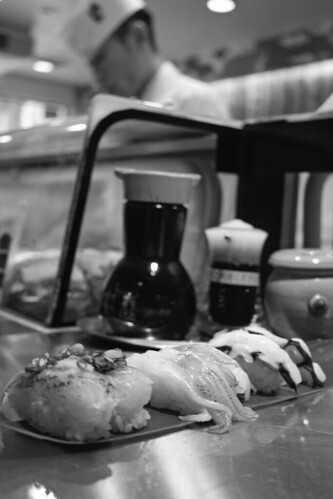Whether in Akihabara, Shibuya or Harijuku, foreigners visiting Tokyo are bound to stumble upon unique art forms.

The line of about 1,000 Japanese nationalists shouted fierce anti-foreigner diatribes through megaphones and loudspeaker-mounted black trucks as they marched in protest through Akihabara.
“Chinese, Koreans, go home,” an older man said, yelling into my camera and fogging the lens.
“We will not let you forget about Hiroshima and Nagasaki,” another screamed.
Japanese populations who remain loyal to the Emperor and shun foreign influence have always existed, but the global recession has caused these right-wing groups to accuse foreigners of stealing their jobs.
The nationalists interrupted what I hoped to be a good-will trip to Akihabara, a neighborhood known as a Mecca for geeks and technology aficionados.
If it’s related to a video game, anime series or an electronic device built within the last 30 years, it can be found in excess at Akihabara. Tokyo’s electric city is also a hive for the most dedicated otaku, who dress as their favorite video characters in a phenomenon known as cosplay.
Seeking out an authentic Japanese experience in Akihabara, it seemed logical that I too don a cape and create my own American superhero persona. Instead I found the nationalists’ display of unity against foreigners.
Oddly, the uyoku feigned politeness toward me, despite my American flag cape and rainbow bell-bottoms. Many even smiled at my camera and flashed me peace signs.
If Akihabara is the motherboard of Tokyo’s technology fetish, Shibuya is the glittering disco ball for entertainment, shopping and nightlife. One million to 3 million people scramble from the four subway lines of Shibuya station, then flood the ward’s main intersection in clockwork waves.
A few blocks from Shibuya is the stylish clothing district of Harajuku, where almost every young Tokyoite looks like they strutted from the pages of a fashion catalogue. And there are enough swanky bars, multi-level video game and entertainment complexes, dance clubs and love hotels to amuse one all night, every night.
Incredibly, all of Shibuya is stacked within 5.8 square miles.
The only still spot in the streets of Shibuya is the statue of a beloved Akita named Hachiko, who sat in front of the subway station and waited for his deceased master to return every night for ten years until the faithful dog died in 1935.
Today the Hachiko statue is the most popular site for people coming from Shibuya station and a refreshing place to regain one’s senses before jumping into tumultuous flow of human traffic.
[flickr 14423699@N04 72157622562571128]Jimmy Viola can be reached at jimmy.viola@temple.edu.



Be the first to comment